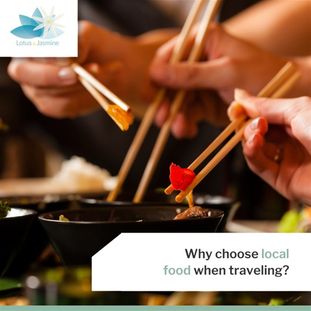Jul. 1, 2022
Circular Economy and Circular Hospitality
Circular Economy
A circular economy is an economic system designed to eliminate waste and the continual use of resources. Circular systems reuse, share, repair, refurbish and recycle to create a closed-loop system,
minimizing the use of resources inputs and the creation of waste, and pollution.
The circular economy aims to keep products, equipment, and infrastructure in use for longer, thus improving the productivity of these resources. Transitioning from
a linear economy to a circular economy does not only amount to adjustments aimed at reducing the negative impacts of the linear economy. Rather, it represents a systemic shift that builds long-term resilience, generates business and economic opportunities,
and provides environmental and societal benefits. This systems solution framework tackles global challenges like climate change, biodiversity loss, waste, and pollution.
The 3R approach is often used to understand more about the circular
economy:
• Reduce (minimum use of raw materials)
• Reuse (maximum reuse of products and components)
• Recycle (high-quality reuse of raw materials)
Circular economy aims to transform every element of
our take-make-waste system: how we manage our resources, how we make and use products, and what we can do with the materials afterwards.
Circular Hospitality
Circular economy strategies has been surfacing for years
already and now is beginning to show signs of infiltrating other industries, with the hospitality sector often considered as one area which could benefit a lot from adopting a circular approach in all its practices.
Recycling has become already
a focus within the hospitality sector; measures such as replacing plastic straws with recyclable paper or reusable stainless steel options, or moving from paper towels to washable fabrics are options becoming very popular. Recent studies show that taking
similar small steps can reduce hotel waste by 16 percent, bar waste by 30 percent, and late night venues by up to 95%.
Solar panels are becoming a very common sight, and help to generate enough energy to supply restaurants and bars through renewable
sources, while some hotels are going for the extra mile adopting strategies that represent a clear major step forward compared to what was done in past years.
The QO Amsterdam is famous for its aquarium, and make use of natural fish waste to provide
nutrients to the hotel’s greenhouse plants that are grown as ingredients to stock the on-site restaurants and feed guests. As stated in the company's website, they have introduced circularity into daily operations with use and reuse of water, which
is one of the highest-volume resources in every hotel. They created a grey water system to limit the wastewater. All water coming from showers and sinks is used again to flush the toilets.
Circular restaurants
Here below popular focus areas in restaurants businesses:
Reutilizing waste: a large percentage of food is incinerated or landfilled as a waste because because of the way it looks or because there are labelling issues related to expiration dates or such. Studies show that most of wasted food is still edible by nature and if properly redistributed more than 1 billion people could be fed by 2050. Some restaurants taking initiatives to contribute to find solutions to this problem transform the wastage into high-quality canteen food or gourmet meals while the unavoidable waste is finally composted. Another approach is utilizing good quality food waste from wholesalers and adapt it to menus accordingly. It is also well known that local produce helps to tackle the problem as it does not face potential damages due to long hours transportation like for imported food.
Sustainable Food: like vegetables and
fruits also seafood also has seasons. The seasonal fishery also exists in seafood. Certain fish has a certain breeding season which is necessary for maintaining the population and to keep up the growing demand. Many restaurants design their menu according
to the season fish catch and offers sustainable seafood.
The vegetable, fruits, cereals that we eat in our day-to-day life is grown far from the cities. This has led to a large amount of waste. Many establishments now adopt strategies in which the food
is grown & distributed within the urbanized city or heavily populated town or a municipality in a sustainable manner.
Zero waste: apart from food waste, restaurants also produce other types of
waste like tissue papers, damaged crockeries & single-use packaging & products. European restaurants alone produce an average of 70,000 kg of waste per year.
Some restaurants in Finland now choose the interiors, crockery, glassware and napkins
made with recyclable and reusable materials, and use composting to reutilize their wastage.
Being circular not only helps reduce the environmental footprint but also helps to reduce the amount of waste that either had to be processed or disposed of safely.
Ultimately it provides environmental, social and economic benefits.
Share this page
